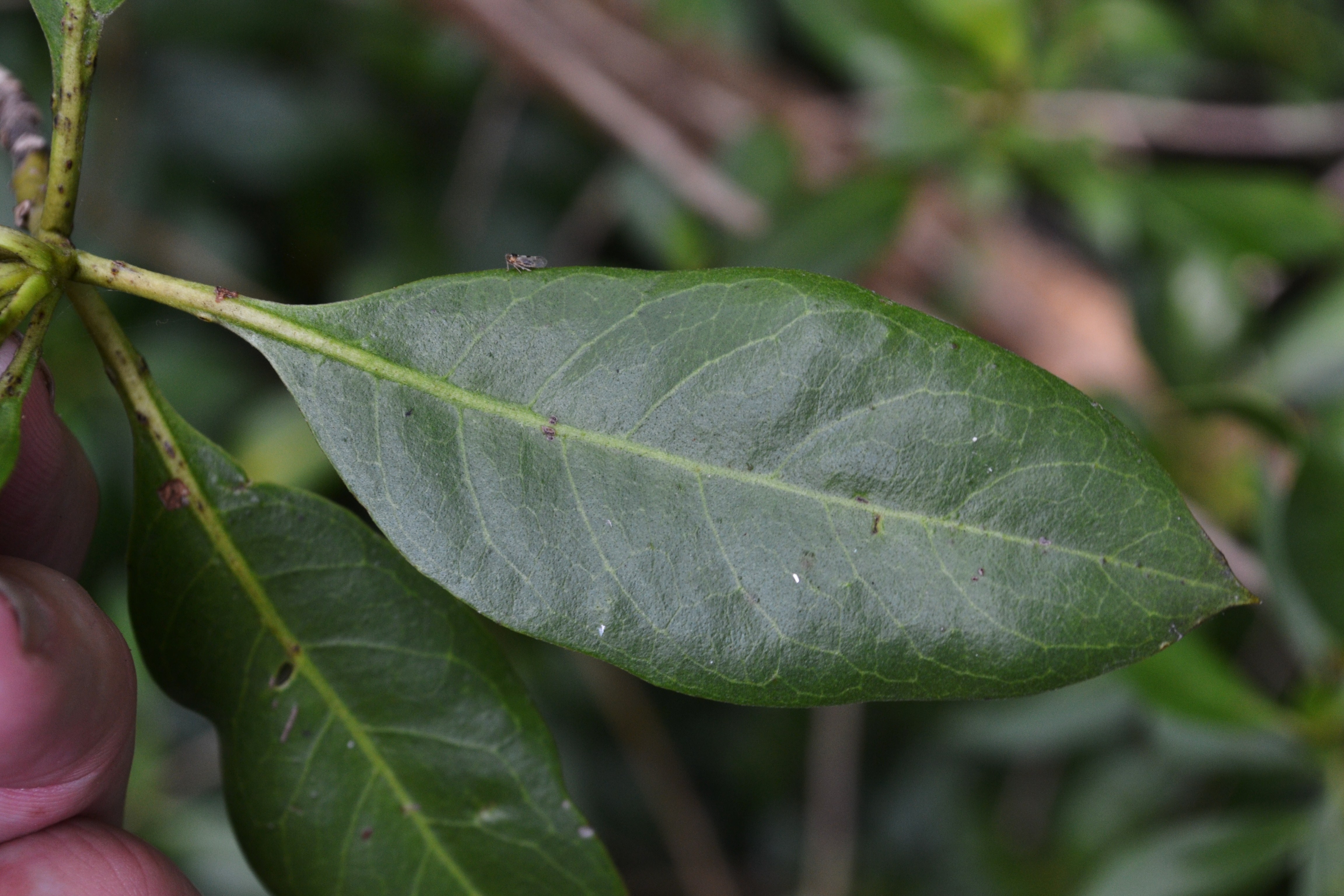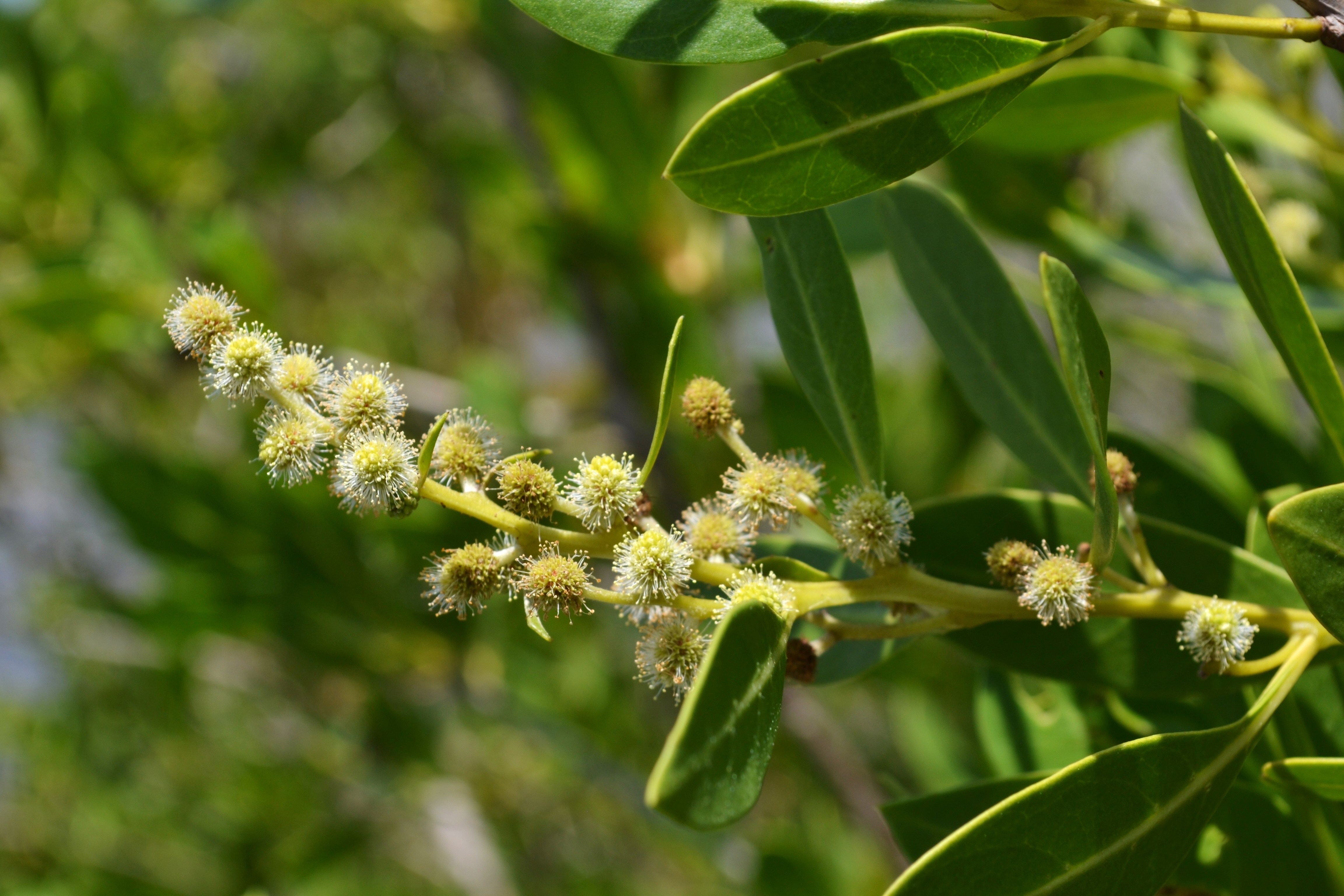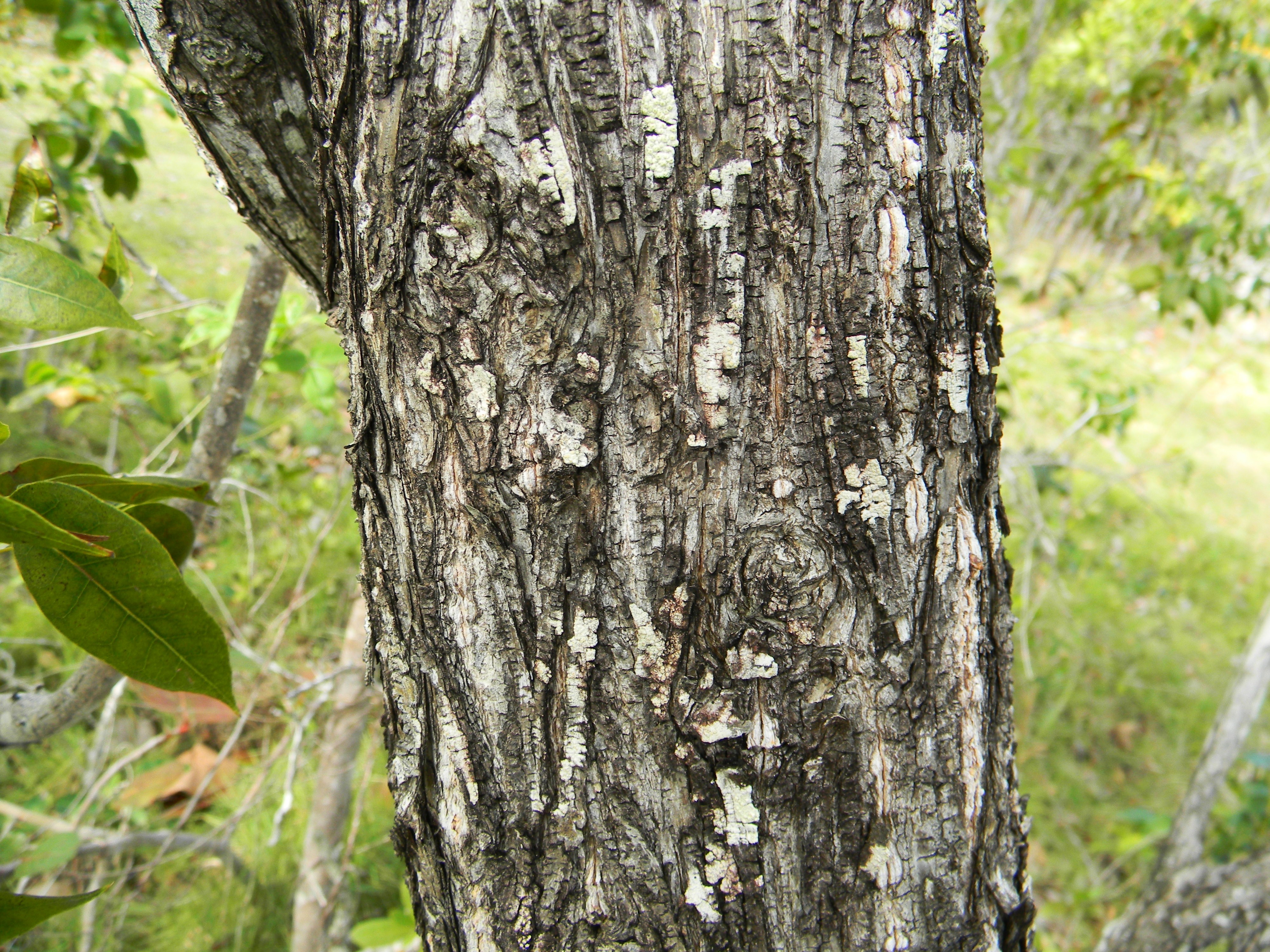Buttonwood
Conocarpus erectus
Plant Family: Combretaceae
Leaves: Alternate, simple, stiff, narrowly elliptic, to 10 cm, the terminal twigs and leaf petioles are greenish yellow. Two small glands are on the petiole near the leaf base.
Bark: Dark gray or brown; strongly fissured.
Flowers: Dioecious, greenish white, without petals, in long clusters at the branch ends and in the leaf axils; spring to summer, also at other times of the year.
Fruits: Round brown cones, to 3 cm, that hold small seeds, found in long-stalked clusters that persist for many months.
Habitat: Coastal, typically found inland of the mangroves, but it is salt tolerant and may share habitat with them.
Growth Form: Medium-sized tree, the trunk is usually upright but may lie prostrate and give rise to secondary upright trunks.
Similar Species: Silver Buttonwood (Conocarpus erectus var. sericeus) is a subspecies that has silvery-gray leaves, but otherwise the same features. It is most often found as an ornamental.
Comments: This hardy tree is a common component of Florida’s coastal flora; it is also native to the West Indies, Central and South America, and West Africa.



